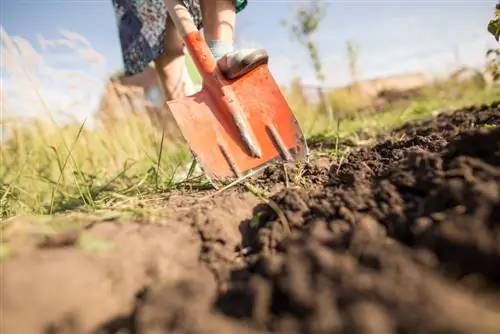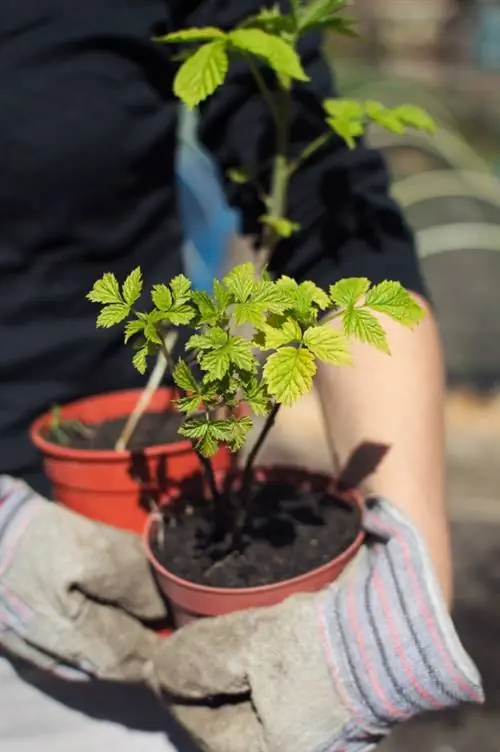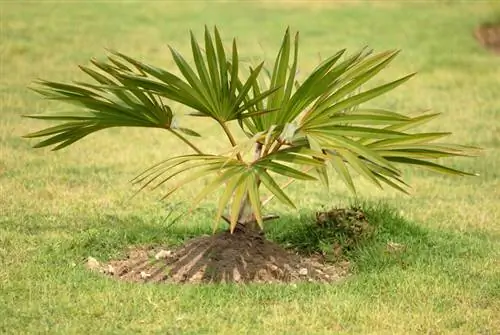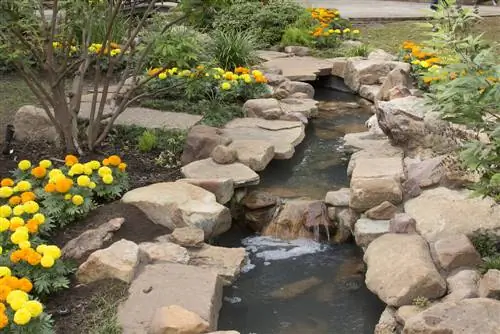- Author admin [email protected].
- Public 2023-12-16 16:46.
- Last modified 2025-06-01 06:02.
Gardeners rarely enjoy the privilege of a horizontal garden floor, as if drawn with a ruler. It is therefore advisable to level out any annoying height differences before laying lawns and beds or paving terraces and paths. You can usually save yourself the cost-intensive use of a specialist company. This guide is packed with tips and tricks on how to level your garden yourself.

How to level an uneven garden yourself?
To level an uneven garden yourself, first determine the height difference. Then remove the turf and gradually distribute topsoil. Then measure the progress, level it with a lawn roller and let the ground rest for two weeks. Finally, work on the last unevenness and improve the floor quality if necessary.
Determine the maximum height difference - this is how it works
The start of garden straightening is to mark the entire area that you want to level. Use the following method to determine exactly the existing height difference that needs to be leveled:
- Drive wooden posts into the ground around the area
- Stretch the cords a few centimeters above the ground
- Hang a plumb line on the cords to determine the highest point in the area
By measuring at various points with a plumb line and tape measure, you can determine to the centimeter exactly the extent to which the uneven surface needs to be leveled. To keep track, ideally mark and write down the values. Please allow for a gradient of 2 cm per linear meter away from the house so that you do not have to deal with drainage problems afterwards.
Leveling the ground - step-by-step instructions for the rough planum
Following the numerical documentation of the straightening, the ground work can begin. To properly level the uneven garden, all you need is a shovel, rake and a roller. How to proceed correctly step by step:
- Lift the existing sod from the surface of the earth with the spade
- Ideally spread out a weed fleece for an easy-care garden
- Successively spread the topsoil over the area and smooth it out with the rake
- Repeatedly measure the progress of the straightening with a plumb line and tape measure
- In the last step, level the area with a lawn roller
To level a large area, you can rent various machines and equipment inexpensively from a hardware store. A sod cutter removes old lawn or a bumpy meadow in no time. A tiller loosens the soil to remove roots. Use a small vibrating plate to level the topsoil. The mini excavator moves a large volume of earth effortlessly.
Compensate the last unevenness with fine planum - this is how it works
Following the rough subsoil, please give the soil at least 2 weeks to settle. After this period has expired, measure the level again with a spirit level. Where the ground has sagged, level these final unevenness with a mix of topsoil and compost. Work the area with a rake, rake and lawn roller until fine, crumbly soil is created. This fine subsoil forms the perfect basis for all kinds of plants.
Tip
Leveling your garden is an excellent opportunity to improve the quality of the garden soil. With mature compost, sandy soil has better storage capacity for water and nutrients. Loosen compacted loamy and clay soil with sand, perlite and leaf mold.






